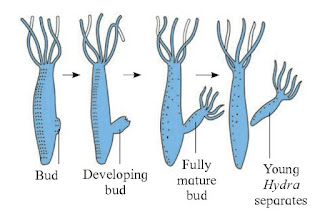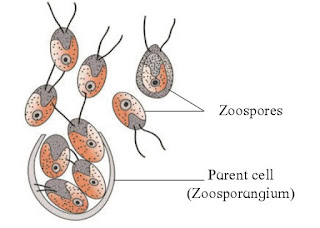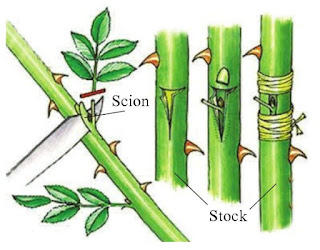What is Reproduction | Definition | Types of reproduction | Importance
Reproduction is a fundamental characteristic of living beings, allowing them to produce others similar to themselves. Human reproduction is sexual, requiring a male and a female reproductive cell to create a new being. There are two main forms of reproduction: sexual and asexual.
Asexual reproduction is crucial for plants that do not produce viable seeds, such as certain bananas, fig trees, orange trees, and grapevines. In some species, asexual or vegetative propagation is easier, faster, and more cost-effective than seed propagation.
Definition of Reproduction:
- Reproduction is the production of young ones like parents.
- Reproduction is defined as a biological process in which an organism gives rise to young ones (offspring) similar to itself.
- Reproduction is the biological process of producing offspring for the continuation of life, or the process of producing new individuals.
What is Reproduction?
- Reproduction is an essential process as it leads to the continuation of species as well as to maintain the continuity of life.
- Humans are species that reproduce through sexual reproduction.
- Reproduction is one of the fundamental phenomena that all life has.
- Every extant individual is the result of a previous generation of reproduction.
- Each organism has its own particular method of reproduction.
- The offspring grow, and in the tum produce new offspring. Thus, there is a cycle of birth, growth, and death.
- Reproduction enables the continuity of the species, generation after generation.
- There is a large diversity in the biological world and each organism has evolved its own mechanism to multiply and produce offspring.
- The organism’s habitat its internal physiology and several other factors are collectively responsible for how it reproduces.
- Reproduction are of two types sexual reproduction and asexual reproduction
- In asexual reproduction only one parent involved, for example bacteria reproduce asexually by cell division.
- Asexual reproduction is not limited to single-celled organisms. Most plants can also reproduce asexually.
- Common asexual reproduction includes vegetative reproduction, budding, sporogenesis etc.
- Sexual reproduction, on the other hand, involves two parents of different sexes. For example, human reproduction is a kind of sexual reproduction.
- Generally speaking, higher organisms reproduce through sexual reproduction.
Types of Reproduction
Based on the number of individual (Parents) involved in the process of reproduction, Reproduction is of two types:
1. Asexual Reproduction
- Asexual reproduction is defined as the mode of reproduction that does not involve the in fusion of two compatible gametes or sex cells (Male & Female gametes).
- It is the process resulting in the production of genetically identical progeny from a single organism and inherits the genes of the parent.
- Such morphologically and genetically identical individuals are called clones.
- Asexual reproduction is common among single-celled organisms, and in plants and animals with relatively simple organizations.
- Organisms choose to reproduce asexually by different modes or ways like vegetative reproduction, fragmentation, binary fission, spore formation, Conidia formation, Gemmules formation, etc.
Types of Asexual Reproduction:
2. Budding: It is the most common method of asexual reproduction in unicellular Yeast. Usually, it takes place during favorable conditions by producing one or more outgrowths (buds). These buds on separation develop into a new individual. Budding occurs commonly in some invertebrate animals such as corals and hydras. In hydras, a bud forms that develops into an adult, which breaks away from the main body; whereas in coral budding, the bud does not detach and multiplies as part of a new colony.
 |
| Fig: Budding in Hydra. |
3. Spore formation: In Chlamydomonas asexual reproduction occurs by flagellated, motile zoospores which can grow independently into new individuals. The method of spore formation occurs in both unicellular and multi-cellular organisms. This process takes place in plants. In spore formation, the parent plant produces hundreds of reproductive units called spores in its spore case. When this spore case of the plant bursts, these spores travel in air and land on food or soil. Here they germinate and produce new plants. Fungi like Rhizopus, Mucor etc are examples of spore formation.
 |
| Fig: Spore formation |
4. Regeneration: Regeneration is an asexual method of reproduction. In this process, if the body of a parent organism gets cut, then each cut part can regenerate and form a whole new organism from its body parts. This happens because when the body of an organism that can undergo regeneration gets cut then the cells of the cut body part divide rapidly and form a ball of cells. These cells then move to their proper places to form organs and body parts. Regeneration occurs in both plants and animals. Hydra and planaria undergo regeneration.
5. Parthenogenesis: Parthenogenesis is a form of asexual reproduction where an egg develops into a complete individual without being fertilized. The resulting offspring can be either haploid or diploid, depending on the process and the species. Parthenogenesis occurs in invertebrates such as water fleas, rotifers, aphids, stick insects, ants, wasps, and bees. Some vertebrate animals, such as certain reptiles, amphibians, and fish, also reproduce through parthenogenesis.
6. Binary Fission: Fission, also called binary fission, occurs in prokaryotic microorganisms and in some invertebrate, multi-celled organisms. After a period of growth, an organism splits into two separate organisms. Some unicellular eukaryotic organisms undergo binary fission by mitosis. In other organisms, part of the individual separates, forming a second individual. This process occurs, for example, in many asteroid echinoderms through the splitting of the central disk. Some sea anemones and some coral polyps also reproduce through fission.
7. Vegetative Reproduction: Plants reproduce asexually through their vegetative parts. Hence, the new plants formed are genetically identical to their parents. There are also a few methods that would not occur naturally in the plants. Agriculture and horticulture exploit vegetative reproduction to multiply fresh stocks of plants. Artificial methods are used to propagate desired varieties according to human requirements.
The various methods of vegetative reproduction are as follows :
a. Cutting :
The small piece of any vegetative part of a plant having one or more buds is used for propagation viz. Stem cutting – e.g. Rose, Bougainvillea; leaf-cutting – e.g. Sansvieria; root cutting e.g. Blackberry.
b. Grafting :
Here parts of two plants are joined in such a way that they grow as one plant. In this method, part of the stem containing more than one bud (Scion) is joined onto a rooted plant called stock, which is called grafting. Whereas budding is also called bud grafting in which only one bud is joined on the stock, e.g. Apple, Pear, Rose, etc.
 |
| Fig: grafting in rose |
c. Tissue culture: It is a method by which a small amount of plant tissue is carefully grown to give many plantlets. The micropropagation method is also used nowadays.
Advantages of Asexual Reproduction
- The energy requirements for reproduction are minimal.
- It allows for species survival.
- Multiple forms of asexual reproduction are available.
- Only one organism is required to establish a colony.
- In-plant organisms, asexual reproduction eliminates the need for seeds
- Crop losses can be balanced with this reproduction method.
2. Sexual Reproduction
- Sexual reproduction is defined as the mode of reproduction that involves the infusion of two compatible gametes or sex cells ( male and female gametes).
- All organisms react to maturity in their life before they can reproduce sexually.
- In plants, the end of the juvenile or vegetative phase marks the beginning of the reproductive phase and can be seen easily in the higher plants at the time of flowering.
- Sexual reproduction involves two major events viz. meiosis and fusion of gametes to form a diploid zygote and the production of genetically dissimilar offspring.
- Sexual reproduction is characterized by a fusion of the male and female gametes (fertilization), the formation of zygotes, and embryogenesis.
- All organisms have to reach a certain stage of growth and maturity in their life. before they can reproduce sexually. That period of growth is called the Juvenile phase. It is known as a vegetative phase in plants. This phase is the variable duration in different organisms.
- There are concomitant changes in the body (like slowing of metabolism. etc.) during this last phase of life span.
- Old age ultimately leads to death. In both plants and animals, hormones are responsible for the transitions between the three phases.
- Interaction between hormones and certain environmental factors regulates the reproductive processes and the associated behavioral expressions of organisms.
Events in sexual reproduction:
- After attainment of maturity. all sexually reproducing organisms exhibit events and processes that have a remarkable fundamental similarity.
- Even though the structures associated with sexual reproduction are indeed very different.
- Sexual reproduction is characterized by the fusion (or fertilization) of the male and female gametes. the formation of zygote and embryogenesis.
- Sequential events that occur in sexual reproduction are grouped into three distinct stages are Pre-fertilization, Fertilization and the Post-fertilization.
- Pre-fertilization Events: These include all the events of sexual reproduction before the fusion of gametes. The two main pre-fertilization events are gametogenesis and gamete transfer.
- Fertilization: The most vital event of sexual reproduction is perhaps the fusion of gametes. This process called syngamy results in the formation of a diploid zygote. The term fertilization is also often used for this process. The terms syngamy and fertilization are frequently used though, interchangeably.
- Post-fertilization Events: Elements in sexual reproduction after the formation of the zygote are called post-fertilization events. Like zygote and embryogenesis.
Hermaphroditism :
Hermaphroditism occurs in animals where one individual has both male and female reproductive parts. Invertebrates, such as earthworms, slugs, tapeworms, and snails, are often hermaphroditic. Hermaphrodites may self-fertilize or may mate with another of their species, fertilizing each other and both producing offspring. Self-fertilization is common in animals that have limited mobility or are not motile, such as barnacles and clams.
Advantages of Sexual Reproduction
- It produces genetic variation in the offspring.
- The species can adapt to new environments due to variation, which gives them a survival advantage.
- A disease is less likely to affect all the individuals in a population.
- One of the most important advantages of sexual reproduction is that it results in genetic variation among offspring.
- Genetic recombination is another advantage of sexual reproduction.
Frequently Asked Questions on Reproduction
- We living things connect life by creating new individuals.
- The birth of a new organism from the pre existing organism is called reproduction.
- Reproduction can be broadly divided into two types.
- First, reproduction without gametogenesis is called asexual reproduction.
- On the other hand, reproduction accompanied by gametogenesis is called sexual reproduction.
- Gametes are special cells.
- Gametes made by males are called sperms , and gametes made by females are called eggs.
- The combination of sperm and egg is called fertilization.
- Gametes are required for producing new individuals by sexual reproduction.
- Sexual reproduction is characterized by different genes and slow growth rates.
- In sexual reproduction, gametes made by different individuals merged to form a new individual.
- Compared to asexual reproduction, new individuals born by sexual reproduction carry different genes from their parents.
- In addition, sexual reproduction does not occur unless male and female gametes meet, so it is characterized by a slow growth rate.
- It is important that sexual reproduction produces new individuals with genes that differ from their parents.
- This is because sexual reproduction is thought to have pushed the evolution of living things.
